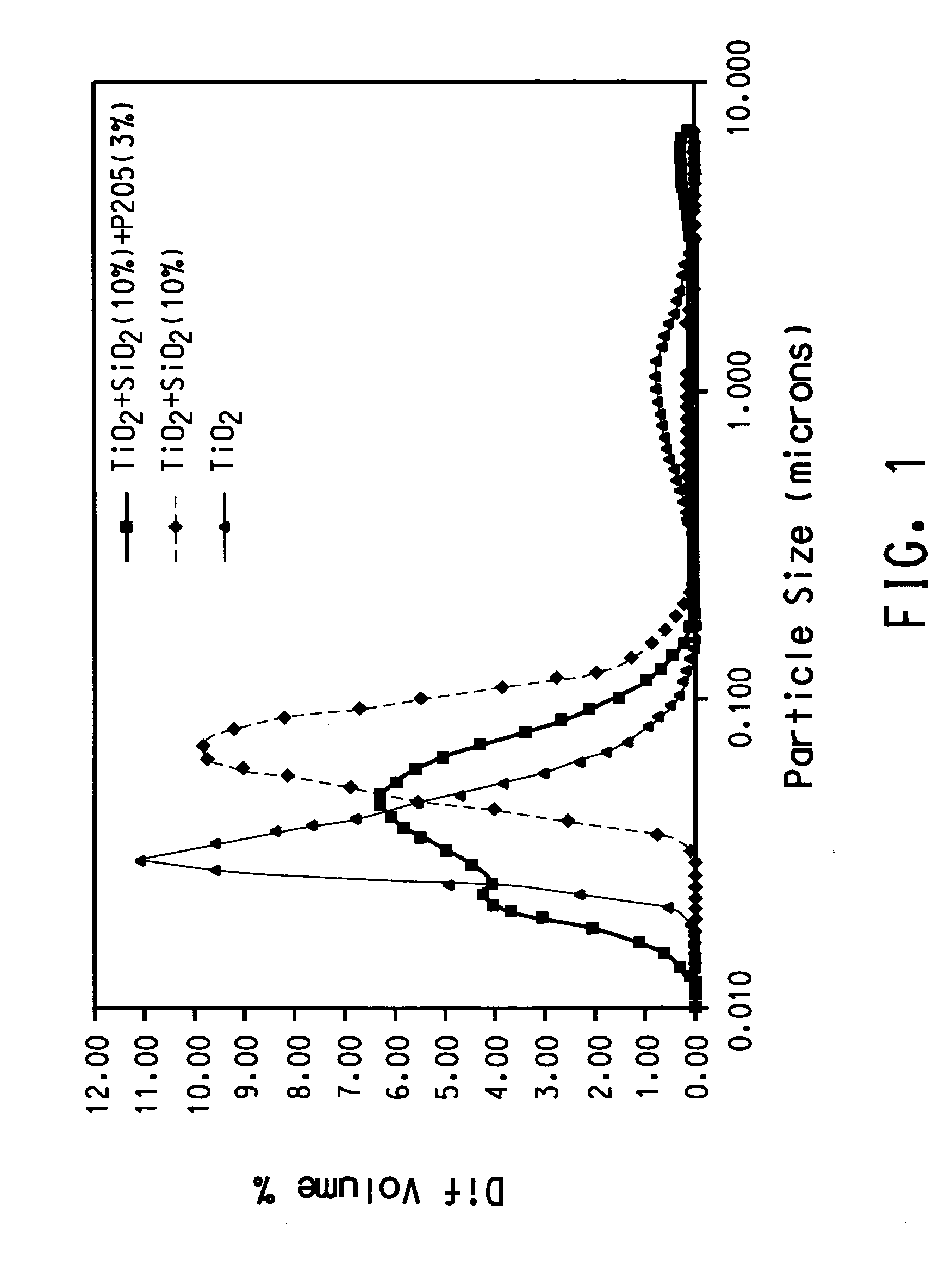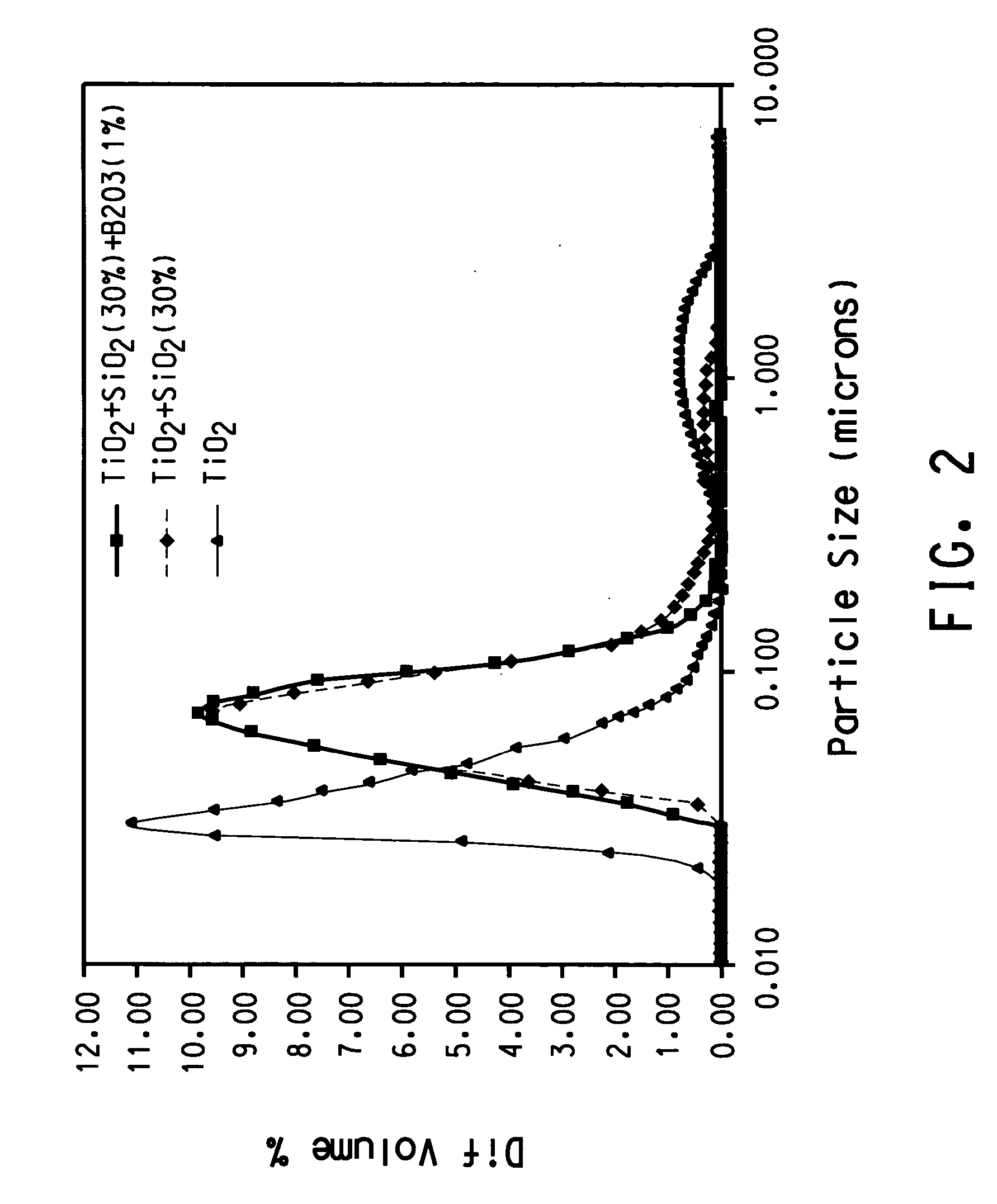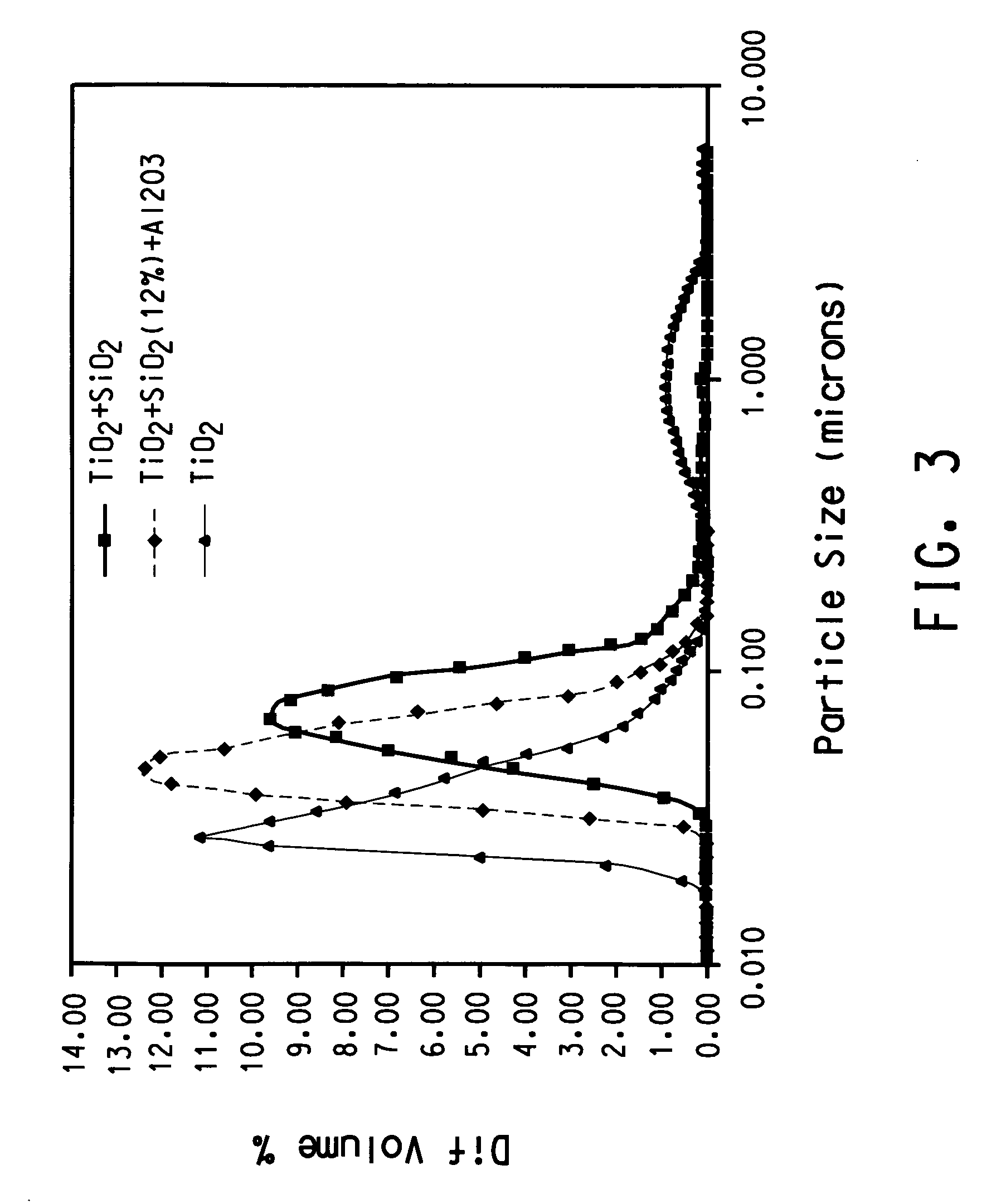Plasma synthesis of metal oxide nanoparticles
a metal oxide and nanoparticle technology, applied in the field of metal oxidecontaining particles, can solve the problems of particle size distribution and degree of aggregation and agglomeration control of vapor phase synthesis, and achieve the effect of improving the degree of agglomeration and aggregation
- Summary
- Abstract
- Description
- Claims
- Application Information
AI Technical Summary
Benefits of technology
Problems solved by technology
Method used
Image
Examples
example 1
TiCl4 without Flow Homogenizer
[0067] TiCl4 vapor was thoroughly premixed with oxygen by bubbling oxygen at a rate of 10 l / min through a cylinder maintained at room temperature that contains liquid TiCl4. Ar was used as the plasma gas. The mixture of TiCl4 and oxygen was then introduced into the reaction chamber through three equally spaced radial ports that were 0.02 cm in diameter. The reaction chamber was of cylindrical shape (2.52 cm in diameter, 7.56 cm in height). Titanium dioxide aerosol particles were formed by chemical nucleation as a result of the TiCl4 oxidation reaction. At the end of the reaction chamber, room temperature oxygen was introduced radially into the quenching chamber at a rate of 30 l / min where the high temperature of the aerosol stream was lowered by mixing with room temperature quenching gas. The quenching chamber is of cylindrical shape (2.52 cm in diameter, 20.16 cm in height). Downstream from the quenching chamber, titanium dioxide particles were collec...
example 2
TiCl4 with Flow Homogenizer
[0068] TiCl4 vapor was thoroughly premixed with oxygen by bubbling oxygen at a rate of 10 l / min through a cylinder maintained at room temperature that contains liquid TiCl4. Ar was used as the plasma gas. The mixture of TiCl4 and oxygen was then introduced into the reaction chamber through three equally spaced radial ports that were 0.02 cm in diameter. The reaction chamber was of cylindrical shape (2.52 cm in diameter, 7.56 cm in height) and a flow homogenizer was held inside of the reaction chamber. Titanium dioxide aerosol particles were formed by chemical nucleation as a result of the TiCl4 oxidation reaction. At the end of the reaction chamber, room temperature oxygen was introduced radially into the quenching chamber at a rate of 30 l / min where the high temperature of the aerosol stream was lowered by mixing with room temperature quenching gas. The quenching chamber is of cylindrical shape (2.52 cm in diameter, 20.16 cm in height). Downstream from t...
example 3
TiCl4 and SiCl4
[0069] TiCl4 vapor was thoroughly premixed with oxygen by bubbling oxygen at a rate of 10 l / min through a cylinder maintained at room temperature that contains liquid TiCl4. Silicon tetrachloride vapor was thoroughly premixed with oxygen by bubbling oxygen at a rate of 0.3 l / min. The cylinder containing silicon tetrachloride was immersed in a NaCl-ice water bath that was maintained approximately at −12° C. Ar was used as the plasma gas. The stream containing TiCl4 vapor and the stream containing silicon tetrachloride were mixed before they were introduced into the reaction chamber through three equally spaced radial ports that were 0.02 cm in diameter. The reaction chamber was of cylindrical shape (2.52 cm in diameter, 7.56 cm in height) and a flow homogenizer was held inside of the reaction chamber. Titanium dioxide and SiO2 solid were formed by vapor phase reaction followed by nucleation, condensation and coagulation. As a result titanium dioxide nano-sized particl...
PUM
| Property | Measurement | Unit |
|---|---|---|
| Nanoscale particle size | aaaaa | aaaaa |
| Nanoscale particle size | aaaaa | aaaaa |
Abstract
Description
Claims
Application Information
 Login to View More
Login to View More - R&D
- Intellectual Property
- Life Sciences
- Materials
- Tech Scout
- Unparalleled Data Quality
- Higher Quality Content
- 60% Fewer Hallucinations
Browse by: Latest US Patents, China's latest patents, Technical Efficacy Thesaurus, Application Domain, Technology Topic, Popular Technical Reports.
© 2025 PatSnap. All rights reserved.Legal|Privacy policy|Modern Slavery Act Transparency Statement|Sitemap|About US| Contact US: help@patsnap.com



